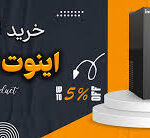In order to become, or remain, financially successful as a self-publisher, you must be able to quickly and effectively get your marketing message to your a course in miracles-buying audience. Your book’s sell sheet is an excellent tool to do this. It’s a perfect marketing tool for offline AND online marketing – because it’s simple to understand, and gets directly to the point.
And, as The Professor likes to say, it’s “no fuss, no muss, no waste, no bother,” for you or the buyer. (He has a many insightful gems like that. I hear them all the time. He has one for every imaginable situation. But, he’s a very wealthy business genius, so we all listen.)
Here Are The 5 Essential Elements To Optimizing Your Sell Sheet:
Optimization Tip # 1: Keep It Simple
The genius of a sell sheet is that it’s quick and easy to read. It’s supposed to convey the most important and pertinent information about your book in a short, simple, and obvious, format. And, it must be appealing to look at and read while doing all of that. All of the information on the sell sheet must only be concerned with your book. No extraneous information necessary. In other words, don’t oversell or exaggerate.
Ask yourself: “What information is absolutely necessary that will help the buyer make the decision to find out more about my book, or go directly to buying it?” Get to it quickly. You only have about 30 seconds to hold onto the person reading your sell sheet. Use every inch of it very wisely.
Optimization Tip # 2: Differentiate Your Book
You’ve all heard about differentiation a million times before. Differentiate yourself, your message, and your book, from your competition. You know this already. If you didn’t already know how to differentiate yourself, your message, and your book, from your competition, BEFORE you wrote your book, you have much bigger problems that a sell sheet can’t fix.
Your message that you want, or need, to share with your reading audience, and how you write about it, needs to come through on your book’s sell sheet. Look at yourself, your message, and your book, from the perspective of your audience, your readers, your customers. Now show them how you and your book are different, or better, or more insightful, for your book’s subject matter, than your competition is.
Optimization Tip # 3: Build Visual Hierarchy
By “visual hierarchy,” I mean that the reader’s eyes should first be drawn to the most important item on you sell sheet. This item, or text, or photo, will probably be the biggest item on the page. This might be the book’s cover, for example. Or the title of the book near the top. You should get the idea here.
Then their eyes should be drawn to the second most important item on your sell sheet. Maybe this is a word or statement about the book’s subject matter. The text here might be bigger or more colorful than the other text on the page. Then on to the third most important information that you want the reader the see next. And so on.
Typically, these items start at or near the top of the page, which is where most people first look it. And when viewing on a computer screen, almost always from the top down. Your goal is to help the reader navigate your sell sheet in a pleasant, visually appealing, and easy to read format.
Optimization Tip # 4: Back Up Your Claims
The person reading your it will decide if you’re qualified to write this book, and help them with their problems, in a matter of seconds. Again, look at yourself, your book, and your sell sheet, from the perspective of the reader.
And then ask yourself several questions: “Is this person believable? Does this person look and sound like he can help me with my problems? Help me improve my life? Help me find the answers I need?” Does he have believable qualifications that prove he can write about this book’s topic?”
Remember, every word and picture on that sheet can help or hurt your credibility. It’s up to you to convey your claims about your book, and about you, to the reader in such a way that’s believable. Too much embellishment, or boasting, and you will lose them – in a matter of seconds – and they won’t come back.
Optimization Tip # 5: Make The Call-To-Action (CTA) Easy
By “easy,” I mean KEEP IT SIMPLE. Provide several uncomplicated ways for the reader to contact you and get more information about you and your book. This can be your telephone number at your office. It can be an email address directly to you. The absolute minimum that you must have is a link to your book’s website or landing page. It can also be a link to the book’s Amazon page.

More Stories
Exploring the Fascination with Silicone Sex Dolls
Understanding IPTV: The Future of Television
The Allure of Nightlife: A Journey Through the After-Hours Culture